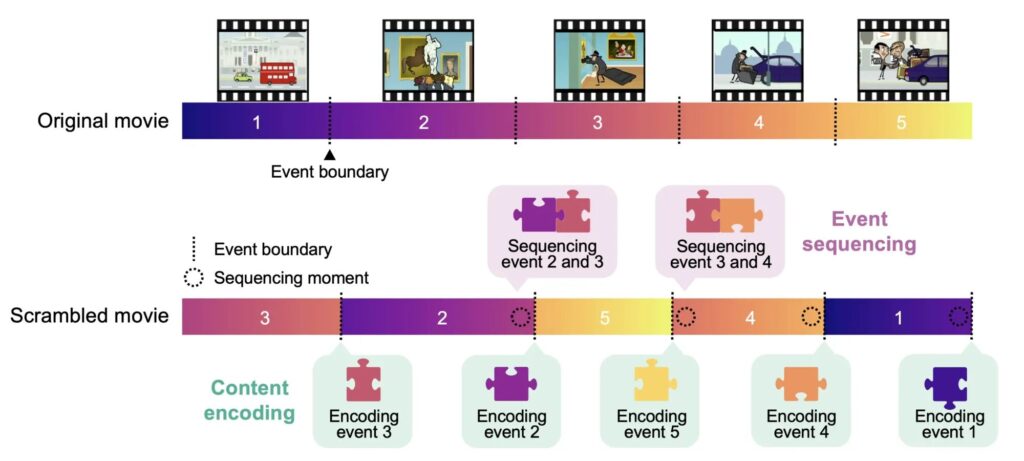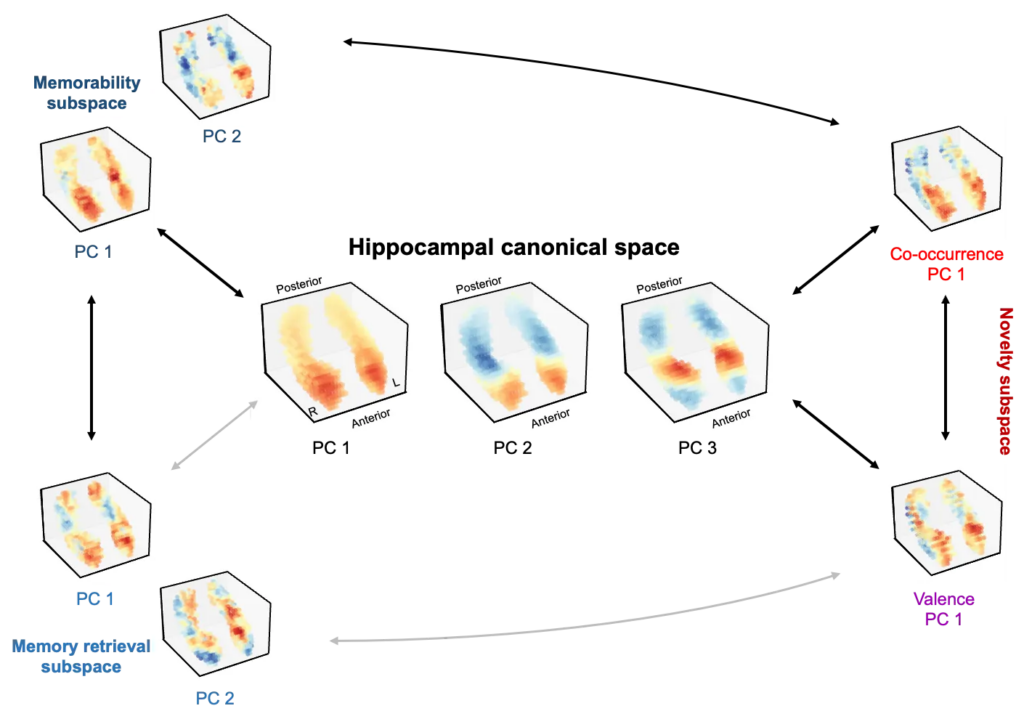Understanding a story involves more than tracking a sequence of events—it requires the brain to actively organize experiences into meaningful structures. In this line of research, we investigate how ongoing narrative comprehension and memory are shaped as the brain integrates past information and updates interpretations over time.
Cognitive and neural state dynamics of story comprehension

Song, H., Park, B. Y., Park, H., & Shim, W. M. (2021). Cognitive and Neural State Dynamics of Story Comprehension. Journal of Neuroscience, 41, 8972-8990. Link
Story understanding represents a real-world process of accumulating and integrating information, where higher levels of understanding arise as narrative elements are integrated into coherent structures. As participants watch movies in the scanner, we investigate how moment-to-moment changes in understanding are reflected in dynamic reconfigurations of whole-brain functional networks. Using supervised and unsupervised machine learning approaches on time-resolved neural signatures, we predict evolving levels of understanding and characterize the network states that support them.
Reconstructing stories in memory

How does the brain make sense of a story? Our study explores how the brain constructs coherent narratives from fragmented events during ongoing comprehension. By combining behavioral measures, fMRI, and large language models, we examine how distinct hippocampal memory systems coordinate to encode individual events and integrate them into a coherent storyline.
Naturalistic social memory encoding and retrieval

How does the hippocampus coordinate multiple processes for social memory encoding and retrieval? To investigate the hippocampus’s role as a coordinator, we apply dimensionality reduction methods to identify low-dimensional subspaces within hippocampal dynamics for each process and assess their alignment, demonstrating shared computation components across encoding and retrieval.